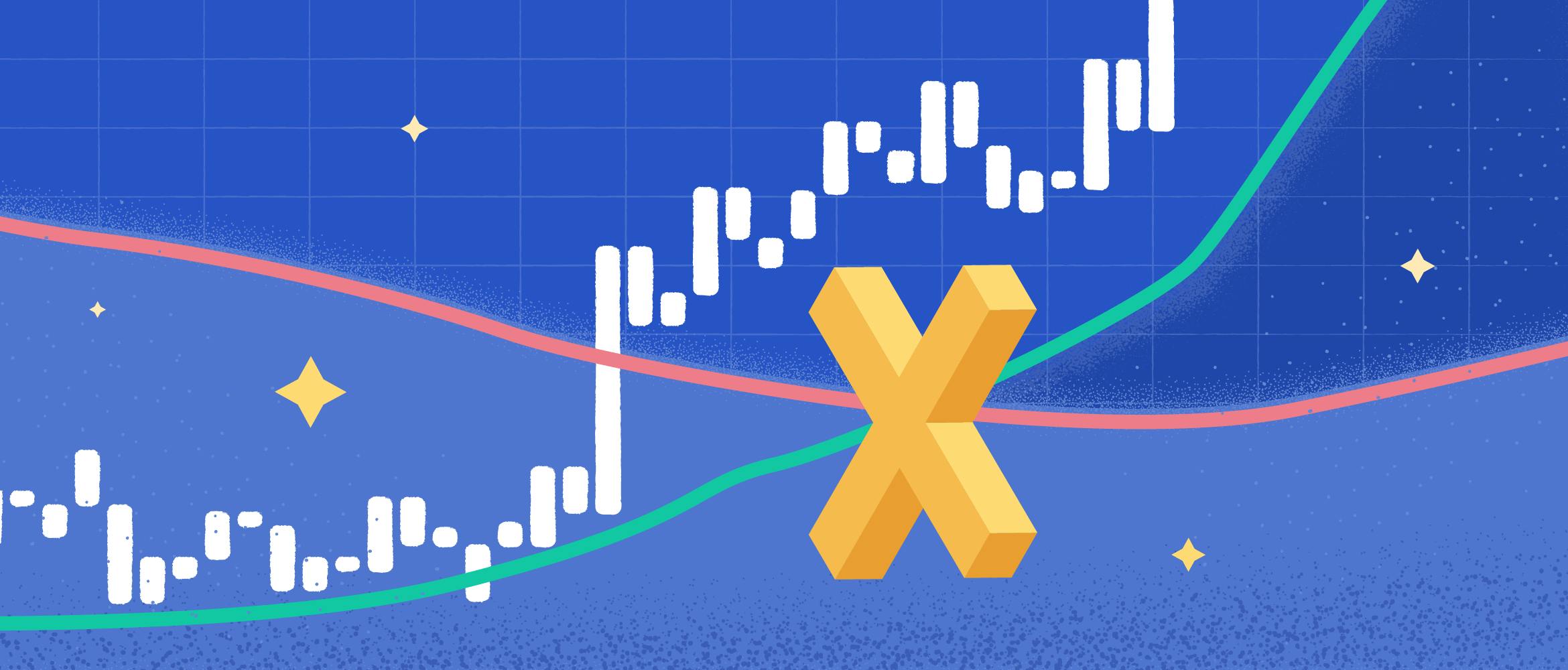
- All
- Analytics
- Technical Analysis
- Trading
- Blockchain
- DeFi
- Guides
- Company News
- Educational
- Opinion
- Price Predictions
- Tools
- Market News
- News
- Trading cases
- Practical guides
- Exchanges
- Trading signals
- Cryptocurrency
- Crypto bots
- Other
Become a crypto master
Learn everything about crypto,
trading and bots

Market Capitalization
Start Trading on 3Commas Today
Get full access to all 3Commas trading tools with free trial period

What is market cap in crypto and how does market cap work? This article describes the benefits and drawbacks of using the metric, explains how to calculate it, and shares the most efficient ways of using it.
What is market capitalization?
Market capitalization is the value of an asset (company, security, crypto, etc.) calculated based on current exchange quotations.
Within the blockchain space, the market cap represents the total value and indicates the relative size of a cryptocurrency. It directly depends on price, volume, and liquidity.
Market cap & similar terms
It’s essential to understand the difference between market cap and volume as the latter reflects the overall activity of the given market rather than assesses its value. The trading volume defines it as combined buying and selling operations with the asset. Market cap is also different from money inflow, as it doesn’t provide information on how much money is in the market.
How to calculate crypto market cap?
Since the market cap is an efficient way to evaluate many crypto projects, let’s figure out how crypto price is determined with the help of the market cap equation. You can see the formula down below.
Market Cap = Current Price x Circulating Supply
To calculate the indicator, you must multiply the up-to-date price by the total amount of the tokens in circulation supply. For instance, if there are 1M crypto coins in the circulating supply and the price per coin is $100, you can find out that the market capitalization of this crypto is $100M.
Another approach is called fully diluted supply (FDV) — crypto enthusiasts use it instead of a total circulating supply. FDV uses all coins rather than only circulating ones.
How to use coin market cap efficiently?
When you know how to figure market cap, you need to understand how to use the metric to your advantage.
- Use the most recent data to calculate the market cap as it fluctuates along with the price of an asset, which is very volatile in the case of cryptocurrencies.
- Get real-time data updates from the existing exchanges or crypto aggregators.
- Implement a crypto-weighted market cap strategy to decide how to invest more efficiently. According to it, you should favor investing in crypto that has a higher market capitalization. For instance, if crypto X and Y respectively take 30% and 70% of the combined market cap, you can allocate investments that follow the same ratio.
Classifying crypto coin market caps
The size of a market cap is crucial in dividing them into categories. Understanding market cap crypto classification is an important step of the wise investment strategy that includes assessing the project's growth potential.
Keep in mind that the main factors that affect the market cap are price and the circulating supply of the tokens. If the price skyrockets, market capitalization also rises considerably. New projects with small caps might seem as a great opportunity due to their features and innovations, but it’s always more important to factor in market cap data as well as other metrics.
Also, note that cryptocurrencies may grow or decline, implying no final market cap designation.
Types of crypto market caps:
- Large Cap. The market cap is around 10 billion USD. This category includes coins that are all around social media and can be considered household names of the blockchain industry. The most obvious examples are Bitcoin (BTC), Ethereum (ETH), Solana (SOL), and Binance Coin (BNB).
- Medium Cap. Market cap is in the range between 1 billion and 10 billion USD. In this category, you can find fast-developing projects like Polygon (MATIC), Stellar (XLM), Axie Infinity (AXS), and others.
- Small Cap. The market cap is less than 1 billion USD. Projects with small market caps like capcoin market or Nord Finance (NORD) generally attract a lot of attention from the industry. They are usually young networks that have a potential for development.
Such a classification has more value for traditional stock investors because cryptocurrency is very volatile. For instance, projects with large market caps are still volatile despite the fact they carry a lower risk than more established and steadily growing networks. Surely, they are less likely to plunge drastically even if a significant share of investors pulls out their assets.
As for the medium cap projects, investing in them involves more risk but the potential rewards are also higher, especially for those who get in early.
Crypto market cap vs stock market cap explained
Even though the market cap is an umbrella term for both crypto and stock markets, each market has some features to take into account. Weighted market capitalization is one of the most popular methods of creating investment portfolios of traditional stocks. This strategy is efficient for publicly traded companies, but the developing blockchain industry works fundamentally differently.
For example, the DeFi coin market cap isn’t the metric that provides a lot of value on its own. The indicator combines crypto's price and circulating supply to show how valuable an asset is. However, you can't always rely on it. In some cases, it can create a false sense of value because cryptocurrency's circulating supply isn’t appropriately determined and usually doesn’t account for staked coins.
Another key difference between traditional and crypto investing is that major cryptocurrency projects have a tendency to move in one general direction. It’s difficult to diversify the portfolio when all the positions follow the same trend. This problem is especially likely to happen when investors choose projects only by their market cap value.
Missed opportunities and liquidity risk
Investing in crypto by weighted market cap index doesn’t work all that great because the market of cryptocurrencies can be inefficient. For instance, altcoins market cap usually doesn’t indicate their potential as it might take a long time for the crypto to gain value. Moreover, the dominance of Bitcoin is so prominent that using this strategy may result in more than 80% of BTC in the portfolio. In fact, any portfolio that’s built just with the help of market cap indicators would miss the promising startups in their early stages.
Another drawback is that a large market cap is not a guarantee for the high liquidity of the asset in the crypto space meaning that even some of the top 50 coins on exchanges have very low liquidity.
Why does crypto market capitalization still matter?
While investing in cryptocurrency, it’s wrong to rely only on the asset's price. Even when it comes to BTC, the most expensive coin may significantly rise or plunge in price just because of changes in the public enthusiasm, circulating supply, or other factors. Events like these have a considerable impact on the project's overall potential. What does cryptocurrency market cap mean for identifying a desirable digital asset, then? Advanced crypto investors use this metric to compare the true value of the currencies and figure out the direction of their further development. Usually, the higher the market cap of crypto, the more appealing it is for the investors.
Bitcoin market cap
Bitcoin — the most known crypto — still takes the first place in terms of market capitalization. One of the reasons Bitcoin continues to thrive is the fully diluted supply of only 21 million coins. It affects the price, pumping the overall market cap and hence BTC domination.
With only around 2 million tokens left for mining, the market cap still tends to grow. On the other hand, high utility and scarcity are huge factors for its success within the blockchain industry. It’s essential to take market capitalization into account to understand the broader image of any token, coin, or project. That way, you’ll be able to make efficient investment moves.
Closing thoughts
As we approach the end of 2023, understanding the intricacies of market capitalization within the cryptocurrency space has become increasingly imperative for both seasoned and novice investors. Market capitalization serves as a litmus test for the value of a particular cryptocurrency, weighing its relative size within the ever-expanding digital currency market. It is a straightforward metric, derived from the multiplication of a crypto's current price by its circulating supply. However, its apparent simplicity belies the underlying complexities and nuances.
Distinguishing market cap from similar metrics such as volume and money inflow is essential, as each provides a different perspective on the market's vitality and momentum. Volume reflects the overall market activity, while money inflow doesn't necessarily depict the precise amount of capital in the market.
While classifying cryptocurrencies based on market caps into categories like large, medium, and small might provide a cursory understanding, it's vital to acknowledge the extreme volatility inherent in the cryptocurrency realm. This volatility ensures that even large-cap projects, despite their comparative stability, can witness significant price fluctuations. Medium and small-cap projects come with their own sets of opportunities and risks, often promising higher returns but at elevated risk levels.
Drawing parallels between cryptocurrency and traditional stock market caps reveals stark differences. While the principle remains consistent, their applications and implications diverge. In traditional stock investments, a weighted market capitalization strategy might be efficient, but the dynamic and developing nature of the blockchain industry demands a different approach.
For instance, while large market caps in the crypto world can indicate prominence and acceptance within the industry, they are not definitive indicators of liquidity. Moreover, the crypto market's inefficiencies sometimes mean that solely investing based on market cap could lead to missed opportunities, particularly when considering nascent yet promising startups.
Bitcoin remains a testament to the potential and power of market capitalization. As the most recognized cryptocurrency, its domination stems not just from its pioneering status but also from its capped supply, ensuring its scarcity and desirability.
In summary, as the blockchain industry continues to evolve, the importance of understanding and adeptly utilizing market capitalization cannot be overstated. However, it should not be the sole compass guiding investment decisions. Investors, now more than ever, must amalgamate a plethora of metrics, insights, and analyses to navigate the intricate labyrinth of cryptocurrency investments. As of 2023, while market capitalization remains an essential tool in the investor's toolkit, its efficient use requires a holistic, informed, and diversified approach to crypto investments.

A proven leader, successful at establishing operational excellence and building high-performance teams with a sharp focus on value creation and customer success.



